Message Thread:
First run at entry/exterior 5 panel, raised panel doors
8/10/22

I have a job I am bidding out for a home that dates to 1861. I need to do two regular five panel, raised doors as you will see in the one picture that is severely damaged and also two arched top doors as you will see the example in the other picture, along with the two openings they are going into. These doors are made out of mahogany. My plan is to do a stave core construction, using either Poplar or Pine for the core. I’m not sure if it is appropriate to use smaller pieces for the core and then fingerjoint the ends or I can just glue up long pieces face-to-face and then mill to size and then put a solid wood either 1/4” or 3/8” skin out of solid african Mahogany. Because the routed sticking, I would need the ends to be mahogany on either side of the core.
My next question is, do you guys use Spaceballs and if so, do you have a link to a website that sells Spaceballs for exterior doors? Even though the two arched doors are interior doors, we are planning on making those as exterior doors as well, meaning 1-3/4” thick with no threshold.
The top of the jambs for the interior arched top doors, I was planning on using two pieces of 3/8” bending ply or kerfcore and apply the veneer using my vacuum press with a radiused jig. These jamb depths are 15” deep.
I was also planning on using four 4” hinges as well. I told the customer to go to vandykes restorers to purchase hinges and mortised lock setd.
Next order of business is the best way to construct the door itself. I have a domino machine XL that I could use to construct these together. I do not own a shaper or a molder, but I do have a 3 1/2 inch horsepower router. Does anyone have any videos and/or advice you could give me on how to make these doors? I have been in the business for many many years, but have never gotten into doing exterior and or interior doors.
I have done refinishing jobs on doors from the early 1900s and the solid panels were put in on one side and then a matching sticking molding was nailed on from the other side and the panel just sat inside of the opening with no Spaceballs or anything.
The casing is no big deal, rather the door is my challenge
Any other suggestions/advice, would be greatly appreciated. Thanks
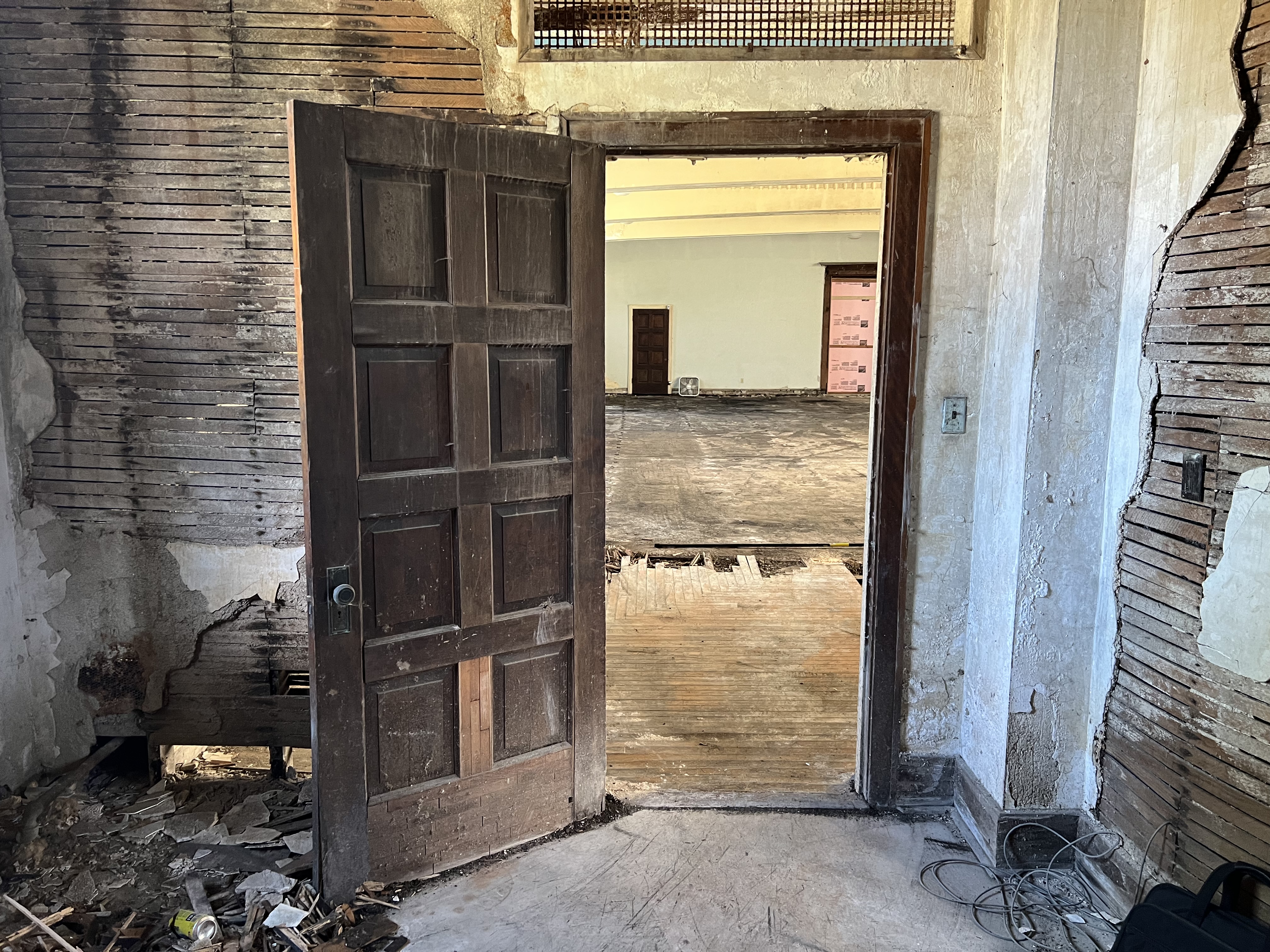
View higher quality, full size image (4032 X 3024)
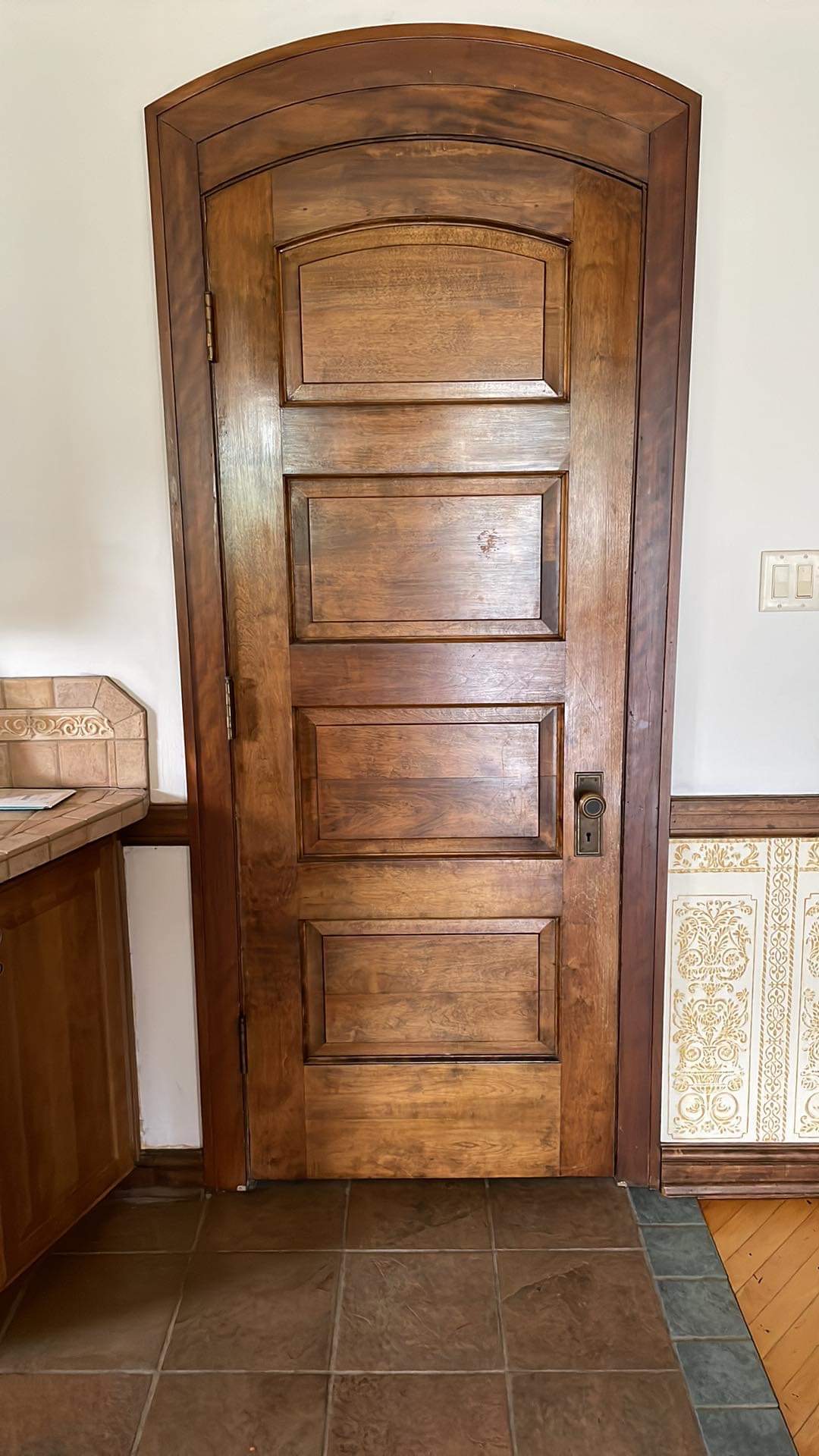
View higher quality, full size image (1080 X 1920)
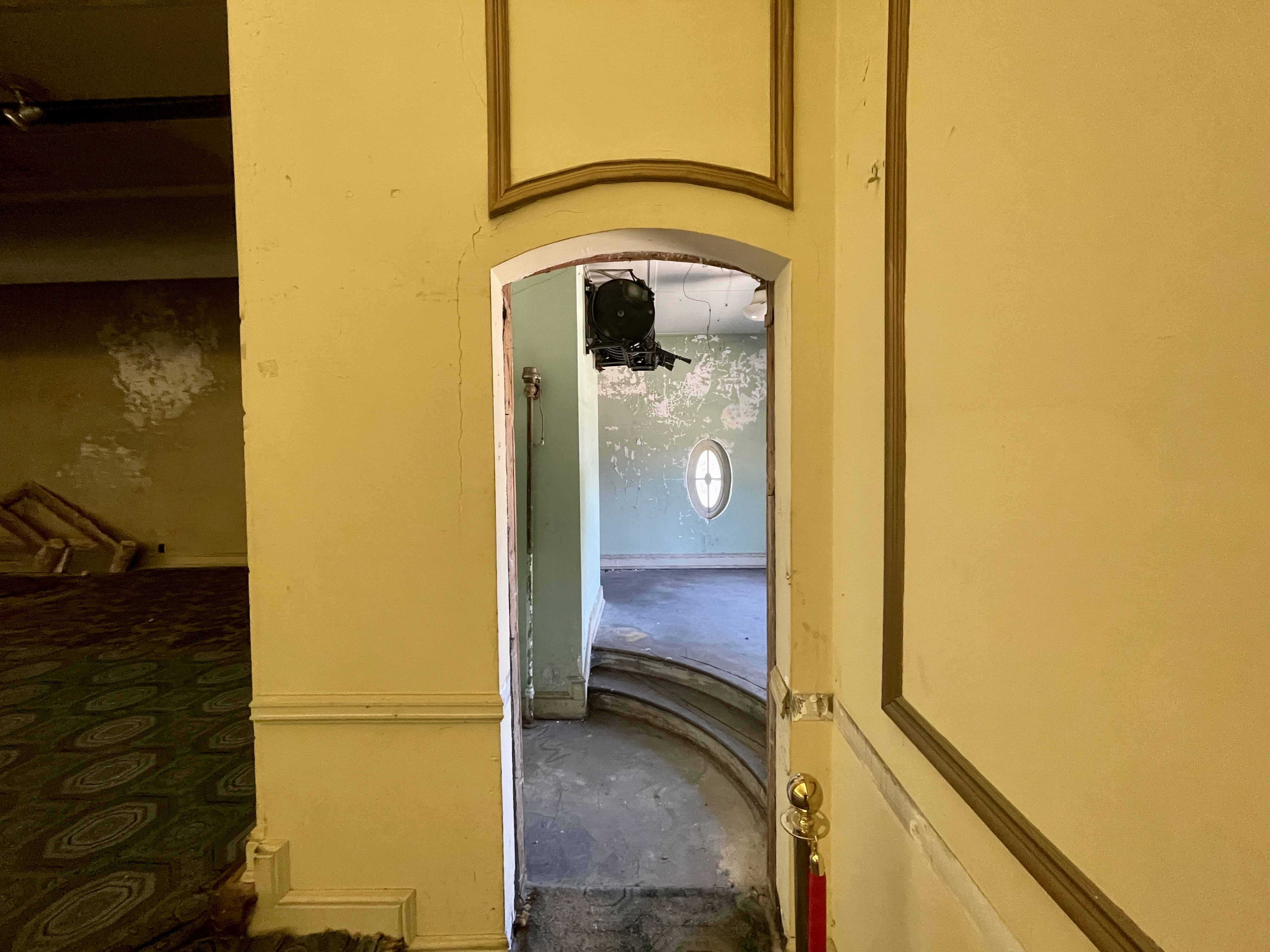
View higher quality, full size image (4032 X 3024)
8/11/22 #2: First run at entry/exterior 5 panel ...
 I'd think a router and a domino would be a hard go at it but I guess its possible. It would seam a bear of a task to me to get an exterior door together that I could warranty. You know the job and your customer. You'd be wise to pickup David Sochar's book on door building and give it a deep read for a CYA.
I'd think a router and a domino would be a hard go at it but I guess its possible. It would seam a bear of a task to me to get an exterior door together that I could warranty. You know the job and your customer. You'd be wise to pickup David Sochar's book on door building and give it a deep read for a CYA.
8/11/22 #3: First run at entry/exterior 5 panel ...

I’m looking for advice on My specific questions
8/11/22 #4: First run at entry/exterior 5 panel ...

"can just glue up long pieces face-to-face and then mill to size"
Answered
"do you guys use Spaceballs"
Answered, and also lots of info in the archives
"Does anyone have any videos and/or advice you could give me on how to make these doors?"
Directly answered
"Any other suggestions/advice, would be greatly appreciated"
Supplied
8/11/22 #5: First run at entry/exterior 5 panel ...

Sometimes I think people are just out to troll David Sochar on this forum.
8/11/22 #6: First run at entry/exterior 5 panel ...

I wasnt trying to be d*cky, but the bulk of all there is on exterior doors is in the archives and Im not a paid salesman for David's book but its at insane level detail in there.
8/11/22 #7: First run at entry/exterior 5 panel ...

My ten cents ,
Not that you want it ,
It's hard enough for me to make a living doing what I am incredibly good at , nevermind trying to make a living doing something new.
And the answer is you don't have the tools, experience, or knowledge to do this job, so refer it to the correct party and don't look back , it's a disaster in the making with the tooling you have .
8/11/22 #8: First run at entry/exterior 5 panel ...

Quicktrim,
Thx for the vote of confidence. I’m glad to see other professionals are capable of being helpful, vs condescending and rude. Rather than be a jerk about it, why not offer some constructive criticism in regard to recommendations of what tooling you think should be used, unless your ego doesn’t allow it
8/12/22 #9: First run at entry/exterior 5 panel ...

I don't use Spaceballs. If I really want to keep a panel from rattling, I center up the panel and drill in from the back side. Then pin the panel in place with a round toothpick in the center of the panel in both rails. Then the clear finish pretty much glues that center in place.
8/12/22 #10: First run at entry/exterior 5 panel ...

This one sure got nasty fast!
8/12/22 #11: First run at entry/exterior 5 panel ...

That's a lot of linear feet of raised panel to do with a router. (18) panels of decent size that need raising on both sides.
This isn't buying a raised paneled router bit to build a kitchens worth of doors(small one sided panels).
I'm not trying to talk you out of doing this job. Just bringing a problem to your attention.
8/12/22 #12: First run at entry/exterior 5 panel ...

You can certainly make stave core engineered stiles if you want but I would go for solid mahogany using Sipo or Genuine South American mahogany. Avoid Khaya or Sapele for doors. You will save yourself a lot of work provided you have the machines to face and mill to size.
Domino XL is fine for doors. Router milling is a tough way to go but possible.
There is a product called Pannelbuddies for spacing house door panels.
Exterior doors I prefer panels held in with stop so everything can be prefinished before final assembly.
I’ve done both ways depending on profiles and design though.
The wide interior radius jamb head I would probably do the same. Not for exterior though.
Good luck!
Joe
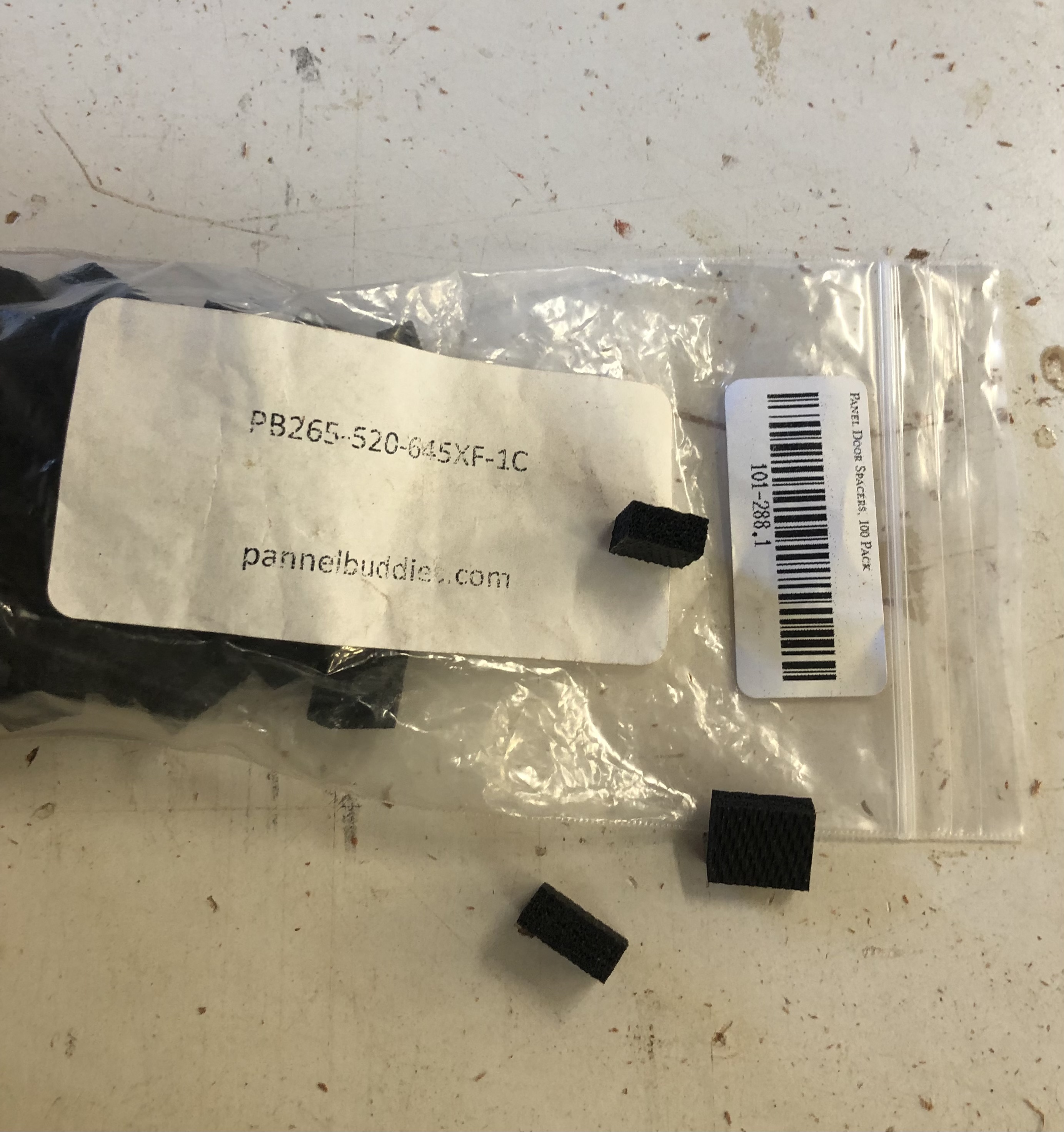
View higher quality, full size image (2766 X 2943)
8/14/22 #13: First run at entry/exterior 5 panel ...

Hello,
Are those the original doors in the photograph? If so why not just follow the previous construction? I would be willing to wager they were mostly built by hand. Do it that way using machines of course to make things quicker. Having built more than a few doors I would be more than extremely hesitant to use domino fasteners for any project subject to the stresses a door undergoes by angry children... he he he. Dowels or better long tenons.. Make them from mahogany solids like the originals. I also think you might be under equipped to do this job properly. Making a door look like a door is simple to make function properly last 140 years is a bit more complicated. I am not trying to be rude or condescending as you mentioned in a previous post I am trying to help you as a woodworker (we do not know everything) and to also help you give good service to your customer. Are not those the ones we are working for?
Cheers Karel
8/14/22 #14: First run at entry/exterior 5 panel ...

Joe's advice is good and based on long experience. If you decide to use a stave core I would stay away from pine and poplar for exterior work. At the bare minimum ensure that the finished stiles end grain are well sealed with epoxy. You can purchase laminated parts - it's a lot of work to make your own.
Doing the milling for full size doors without a shaper is a stretch. Long 14 mm Dominos will be ok for strength, or overlap the Domino mortises and make your own wider splines. You can use sticky back foam weatherstrip to help center the panels but pinning them will be more reliable in the long run.
Laminating the curved jamb heads as you describe can be a bit imprecise due to springback. I would suggest making the jambs first and laying out the door heads to fit. You can also bricklay and veneer the jambs.
Doormaking is not rocket surgery but it does require attention to a lot of details to get it right, especially for exterior doors. Don't be put off by the negative comments but do your homework. You don't want to be redoing a project like this one. If you are not confident of pulling it off, sub it out to someone with more experience.
8/14/22 #15: First run at entry/exterior 5 panel ...

Kevin,
Appreciated the rocket surgery comment. I bet not too many here know the reference!
8/14/22 #16: First run at entry/exterior 5 panel ...

I appreciate everyone’s constructive criticism. A lot of you have made great points. I gave the customer some tentative numbers and unfortunately, he said he has to put off the project for a little while… Or a long while.
I pretty much knew doing the raised panels with a router would be a stretch and it pretty much knew I needed to purchase a shaper. As far as subbing this out, that really is not an option I’m willing to do.
I would much rather gain the experience of doing this than to feel as though I just gave up. I have a good friend of mine from HS I unfortunately don’t talk to very often, is a cabinet maker for a local major millwork company here in Chicagoland And he has made several raised panel and other entry doors… So he’s going to give me a hand when and if this job comes through. Because of how busy he is with his family life, I did not want to burden him with essentially teaching me how to do this, hence why I came onto Woodweb to seek the advice of other professionals.
You all make great points. I guess one of the question is, would you guys recommend I do cope and stick and mortise and tenon the old fashion way?
Does anyone know of any resources as in YouTube videos that are actually worthwhile watching versus someone trying to get their five minutes of fame? The only things I really have not done before and all of my years being in this business are curved staircases (helical shapes) and doors such as this.
One of you mentioned about not using pine or poplar for the stave core, but may I ask why?
Also, someone else mentioned not using sapele, how come?
All I can really get here in Chicagoland is African mahogany or Sapele.
8/14/22 #17: First run at entry/exterior 5 panel ...

Honestly, order David Sochars book:
https://www.acornwoodworks.com/store
Your not going to find any comprensive videos to watch.
8/15/22 #18: First run at entry/exterior 5 panel ...

Integral tenons with coped joints are arguably the gold standard but executing them on this scale requires advanced hand skills or a sizeable investment in machinery and tooling. Cope and stick stub tenon joints reinforced with splines are a workable compromise but to do that efficiently you will want a shaper and matched cutters.
I don't favor pine or poplar for exterior work due to their lack of rot resistance (at least for sapwood). We have 19th century buildings here with white pine exterior millwork that is still solid, and I have read references to old growth yellow poplar being used successfully, but I have seen too many rot failures in my career to feel comfortable using the material available now. If using either for a core any exposed edges should be well sealed.
If you can source Sipo or fit Honduras Mahogany into the budget they are likely to be more stable and workable than Khaya or Sapele, but those are not out of the question.
Good luck finding videos on the subject. Sochar's book is the best contemporary reference. Stephenson's Spindle Moulder Handbook is a good text for shaper work in general, and for traditional millwork Modern Practical Joinery by George Ellis is good.
8/15/22 #19: First run at entry/exterior 5 panel ...
 Website: http://www.bhdavis.net
Website: http://www.bhdavis.net
Poplar is not a good choice for stave core construction....either interior or exterior. It is not stable enough (even in stave core construction) and has little rot resistance. For interior use maple would be a much better choice. For exterior I'd say any of the typical mahogany like imports.
You're on the right track acknowledging that a shaper could be in your future. It will become the heart and soul of your shop. It's a very versatile machine so will open many doors for you....pun intended.
Dowel construction was briefly mentioned above and that is an acceptable alternative for a solidly built door. I'd say at one time or another most pro shops have made a door that way even though cope and stick with mortised joints is the gold standard of construction. I agree with the response that suggested you examine the existing doors and maintain the same construction method if at all possible. That would be doing justice to the historic nature of the property.
This is a professional woodworkers forum and your initial question was pretty basic in nature. I can understand why early respondents took some exception to the request for guidance. However this is a professional level project you may end up undertaking and we all had to build our experience one step at a time.
Good luck,
BH Davis
8/15/22 #20: First run at entry/exterior 5 panel ...

True Mortise and tenon is the gold standard but loose tenon, XL Domino and dowels are certainly acceptable.
In my own works I use true mortise and tenon for historical work and other special projects. It takes a huge investment in machines and tooling to do this efficiently in a pro shop and still way more time consuming than cope and stick with dowel or other. See pictures of a recent historic job going through my works. Thick euro doors and interior doors are normally doweled. I have a Domino XL for odd and curved work. I think Domino is great for small shops that cannot afford mortisers, tenoners and the tooling that goes with them.
I prefer working with solid wood when using mahogany or white oak. I reserve stave core engineered for odd species where I cannot get the right thickness or unstable timbers. Also when grain matching is important. Normally it is a same species core with the laminations alternated for grain.
You can buy fingerjointed pine cores and do your own veneers on them. A lot of shops also use Timberstrand OSB for cores. Myself I don’t agree with that but if trying to reach a certain price point I suppose.
Sipo is better than Sapele for doors because of less movement. I’ve seen good and bad Sapele but in general the Sipo is better.
Joe
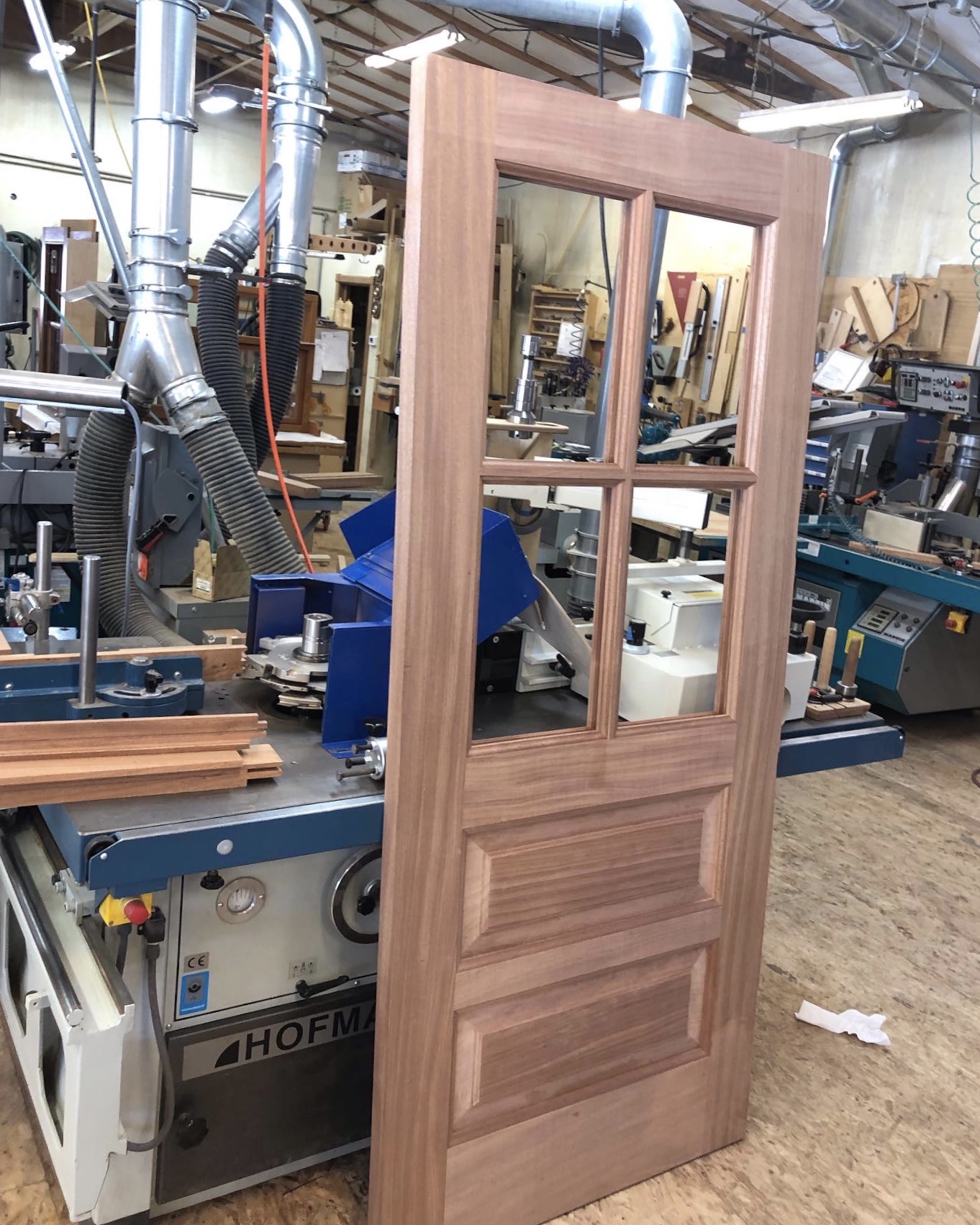
View higher quality, full size image (1362 X 1703)
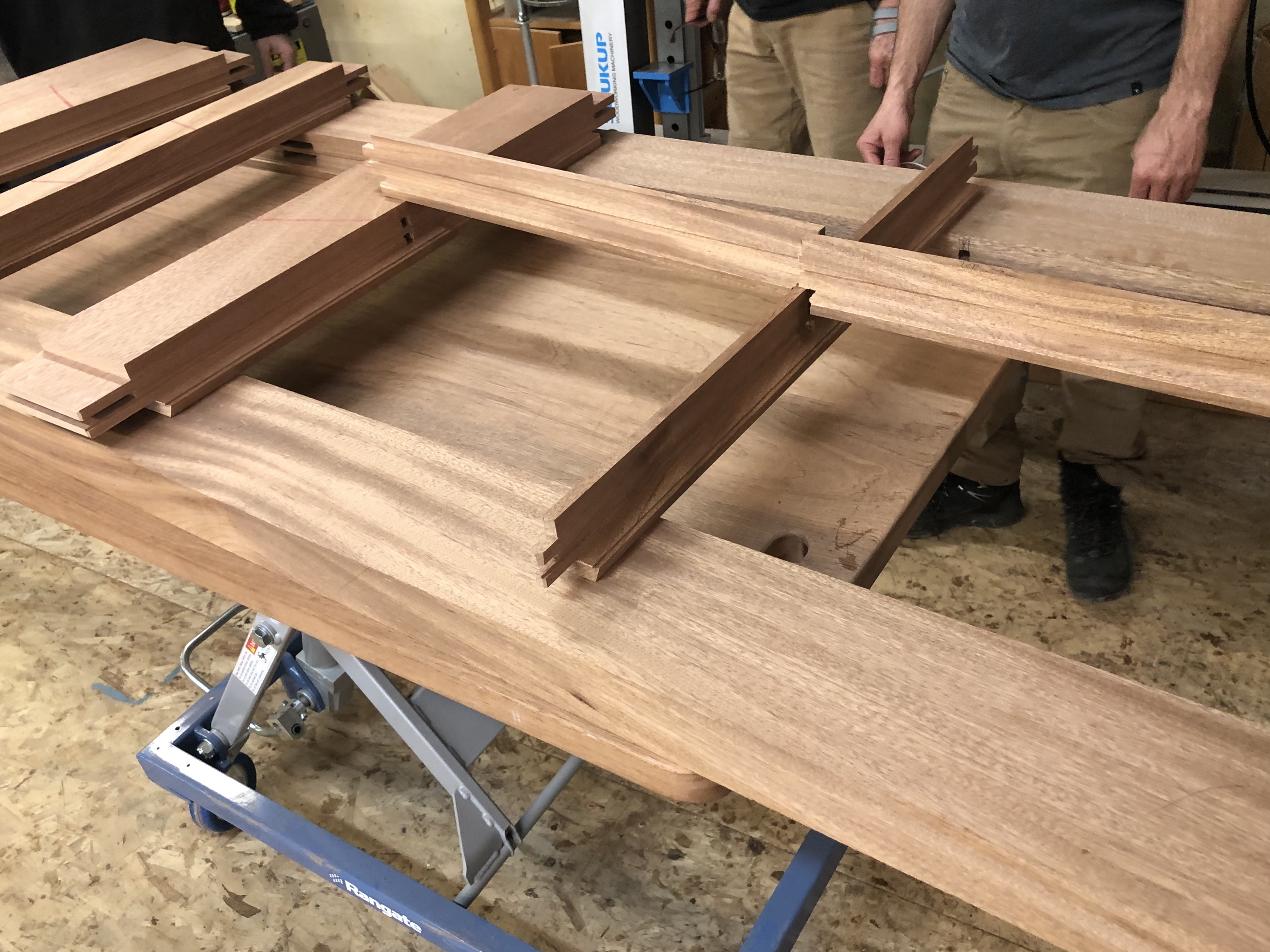
View higher quality, full size image (3686 X 2764)
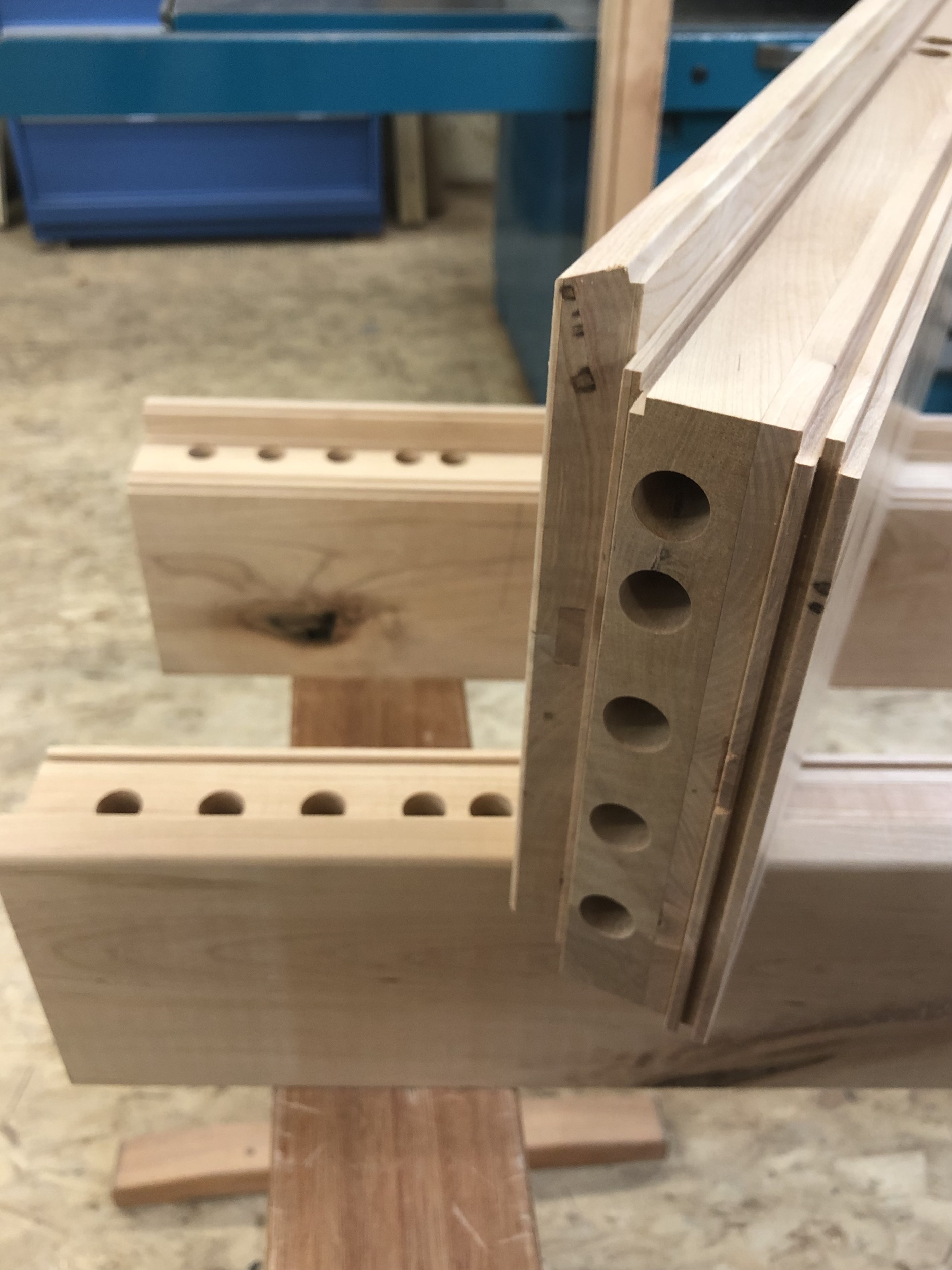
View higher quality, full size image (2830 X 3774)
8/15/22 #21: First run at entry/exterior 5 panel ...

I know this is not a good reason to be dowel averse but my personal aversion to dowels comes from a background in commodity residential interior doors which were all south America sourced so they suffered the speed of production as well as the transport/climate issues. But.. Ive seen more heavily doweled door joints fail than I can count. Ive built them for flipper/budget jobs (nothing Joe posts is in that class) and never had a complaint but it wouldnt be my choice especially now with the Domino XL (we have a Domino but not the XL).
My negative experience with dowel construction seems a clear testament to core construction and material. Seems to be a theme in door construction that is most commonly echoed that going cheap on the core (pine, scraps, fingerjointed, etc..) is a risky business.
8/15/22 #22: First run at entry/exterior 5 panel ...

Mark, I have seen those South American commodity doors and know what you are talking about..
Good dowel construction involves accurate boring machine and well fitting dowels. Not to tight and not to loose. I use dowels from Europe that are rot resistant species and accurately sized. I would love to do every job M&T but I am set up well for doweling and a firm believer that the pro shop should do good work but also make a comfortable living and able to pay employees a living wage.
I would think Domino XL in Sipo would be better than dowels.
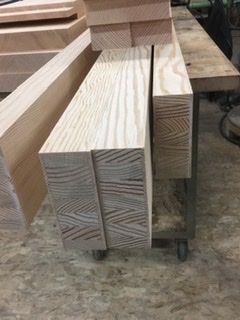
8/15/22 #23: First run at entry/exterior 5 panel ...

Joe,
Couldnt agree more. I can only imagine MC/Climate control, etc. in those south American shops would be suspect. Dull or bad tooling, bearing runout, over diameter bores, cheap dowels, etc.. Paper thin face veneers and after calibrating there are transparent thin layers of material left.
Im fully aware that decent dowel construction is fine. As I mentioned, Ive built several interior doors using long dowels to save true M&T. None the less its still always there.
8/16/22 #24: First run at entry/exterior 5 panel ...

Lotta good info and insight in this thread. No one mentioned adhesives though. I've built a few doors for interior cabinetry when ordering didn't work, so I'm up to speed for that aspect. But I'm building a shed for myself and am using red cedar from a sawmill a friend hooked me up with for the pair of entry doors. Nothing fancy, just half lap joints. Do you guys consider PU glue to be too rigid to accommodate normal wood movement? The doors might be painted. Or more likely stained with a PU topcoat.
First run at entry/exterior 5 panel, raised panel doors
8/17/22 #25: First run at entry/exterior 5 panel ...

I forgot to mention adhesives oops. Everything we do is glued with epoxy. Expensive but absolutely positive gluing. We are also not in the US and the adhesives available here other than epoxy are not the best so epoxy it is.. For exterior doors I think a better glue would be hard to find. your mileage may vary.
8/17/22 #26: First run at entry/exterior 5 panel ...

Karel,
We only use 3 glues in our shop. TiteBond 1, super glue, and epoxy. Every other glue has some problem. All exterior work is epoxy. The cost of epoxy in a custom door is insignificant. Keep using it.
8/21/22 #27: First run at entry/exterior 5 panel ...

To make entry doors first you need a large jointer. I would never consider making any type of entry door without one. I purchased a 16 inch one with an 8 ft bed. All wood must be joined before otherwise you will never have a true flat door. Now if you can purchase wood staves that are truely flat and veneer them you may be able to get rid of the the jointer. But anyone who is not flattening his material l and assuming it is coming to him that way is starting off on the wrong foot, you made "making" a door but brother you aint building one. You also need a moisture meter, once your material arrives you must check its moisture content. If i is not correct there is a chance that it will move once it is joined. As far as joinery, most of what you have describe here will work, some are better than others, but to be honest the joinery will be better depending on well it is done, just how acurate the joints are rather than the type, but that is just my opinion.
Of course stave doors were not around in the 1800's, so these doors you are making are not historic replica's but rather just doors that "look" like the original ones. I do understand that sometimes we are requested to do what the customer and the money demands, we have all ran into that and we each deal with it in our own way. These doors are one off doors and as such are not hard to make, it just takes a little time, planning and effort. A lot of toolling and machines may make it a bit easier and really would speed things up if you were making quite a few of these but with these being a one off project doing this all by hand may be the quickest, best easiest way to go. Setting up molders, shapers, and getting tooling may take up more time then it actually takes just to build them.
9/20/22 #28: First run at entry/exterior 5 panel ...

Gonna follow this thread!
Lol
9/20/22 #29: First run at entry/exterior 5 panel ...

I flatten material on the CNC. Its not as fast as the jointer but the trade on the CNC is I can gang a lot of parts and deck them off and flip them while Im doing other stuff and I dont have a massive jointer in the shop collecting dust the rest of the year Im not using it and the CNC is working pretty much constantly on anything from solids to cab parts to metal to whatever.
We dont use a jointer regularly enough to justify the floor space so that work goes to the CNC. With a 3.5" 5Z tool its a bit less painful.
9/20/22 #30: First run at entry/exterior 5 panel ...

Yes, flattening them on a cnc is fine, its just a very expensive way to join a piece of wood. The object is that piece of wood has to be truly flat in both width and length and of course has to be ripped perfectly straight. I have found that alot of 8/4 boards will not have enough extra width to allow for jointing and surfacing both sides of the board to make a 1 3/4" (entry) door. I try to find 10/4 stock if it is availible. Of course now a days with supply chain issues and such you may not be able to find 10/4 in the species that you desire. Some real good hardwood suppliers will carry some 10/4 just to make doors out of but they are few and far between, and getting fewer everyday. We used to have a good number of jobs that required custom built doors but not nearly as much as in the past, and by past I mean 10 years or more. Lately, we have built more custom wood jambs than doors. . These jambs are wood and made to fit a manufactured door.
9/20/22 #31: First run at entry/exterior 5 panel ...

Agreed (as mentioned) that its not as fast, hence more expensive, however my math has come from having a machine in the shop that is not regularly used vs. one that is a multi task and runs unattended.
Im in no way advocating that a shop working with solid wood on a daily basis opt for CNC face jointing. In that shop a large jointer with a feeder or a serious S4S machine would be far better. But where doors are becoming less and less a commodity for me, locking up the floor space on a big jointer is a no-go and as mentioned, I can gang multiple parts on the CNC and flatten them while Im sweeping the floor or making other paid work.
Its a less than ideal, yet ideal, setup for diversity.
10/28/22 #32: First run at entry/exterior 5 panel ...

I did a quick search of You Tube threads and there are many videos depicting on how to entry build doors. The OP would do well to watch as many as he can. Lots of information. Some have machinery and some don't. Pick the processes that work for his level. May not be the easiest, fastest or simplest method but with perseverance it can be made to work.
11/3/22 #33: First run at entry/exterior 5 panel ...

I hear you. I hear them.
This job might not be ideal for learning how to build doors; a smaller, less complex situation would be best. Learn the materials, test theories, experiment with equipment. Find a mentor. After all, none of us were born at our current skill level, right?
Entry doors should be epoxied. Period. Your core is the heart of the door, you want it strong and reliable. Timber-strand is a great option for stiles.
If you want historically accurate doors, deconstruct and replicate the existing doors using similar or exact tooling.
My only question, that I have not seen addressed is: If you have and regularly use that CNC and you are opposed to the machinery suggestions, why aren’t you machining the components on that CNC?
Regards, Outside looking in
|
